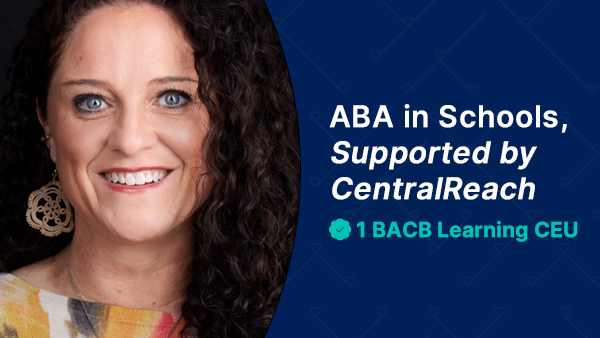As best practices evolve in special education, applied behavior analysis (ABA) in classrooms is becoming increasingly common. What was once primarily a therapy used to support children with autism in developing new skills and modifying behaviors in their homes has branched out to many other settings and populations. As such, ABA in schools is gaining traction for its versatility in supporting children with a wide range of behavioral and learning needs in schools.
Meeting the Growing Need for Behavior Support in Schools
The number of children receiving special education support is growing in the United States. As of the most recently reported data for the 2021-2022 school year, 15% of the public school population receives services under the Individuals with Disabilities Education Act (IDEA). This is up 2% since the 2010-2011 school year (National Center for Education Statistics, 2023).
As districts navigate increased rates of children with additional needs, another trend is emerging— a heightened need for educational behavior support. Students with and without disabilities require enhanced support for complex behavior needs. In some instances, educators and paraprofessionals may not have specialized training or knowledge to address certain challenging behaviors in the classroom. As such, ABA professionals are increasingly collaborating within the school setting to support educators with these students' unique needs.
The Impact of ABA in School Settings
ABA professionals, including Board Certified Behavior Analysts (BCBAs) and Registered Behavior Technicians (RBTs), bring a wealth of expertise to educational teams. As part of an academic team, ABA adds value to students' educational journeys. In schools, ABA professionals play a crucial role in developing and implementing Behavior Intervention Plans (BIPs) that are data-driven and tailored to the student’s individualized needs. They also help students acquire and maintain skills and knowledge. ABA staff also offer valuable support and guidance to teachers, therapists, and other staff members, empowering educators to enhance classroom climate and elevate learner outcomes.
The Role of a School-Based BCBA
While the fundamental principles of ABA are consistent regardless of setting, the role of a BCBA can look vastly different in different settings. The roles and responsibilities can also vary considerably from one school to another.
Some of the primary tasks and responsibilities of a school-based BCBA include:
- Observing and collecting data on student and staff behavior
- Conducting assessments, interviews, and reviewing records
- Creating behavior intervention plans
- Training and supervising RBTs
- Providing training and support to teachers and paraprofessionals
- Collaborating with IEP team members
Differences between school and therapy-based BCBAs
BCBAs are integral members of a student’s behavior support team in schools, often working closely with IEP team members. Behavior analysts typically play a more collaborative, supportive role in schools compared to BCBAs in therapy settings, such as in-home and clinics. In therapy settings, BCBAs are responsible for overall case management and the development and implementation of programming. Generally, special education teachers are responsible for case management, so behavior analysts do not take on that role in schools.
The Role of a School-Based RBT
RBTs are becoming increasingly common in schools. Districts hire RBTs for students whose IEP team determines their complex behavior requires support from someone with formal ABA training. Like behavior analysts, an RBT's role in therapeutic settings differs in schools.
The primary roles and responsibilities of a school-based RBT include:
- Implementing behavior intervention plans with BCBA oversight
- Collect data on behavior and skill-acquisition goals
- Support teachers and other staff as directed
- Support students through IEP goals and teacher-provided curriculum
Differences between school and therapy-based RBTs
While in-home or clinic-based RBTs primarily work with children with autism and IDD, school-based RBTs may work with a broader range of learners. Some RBTs work within the general education population, supporting students with various behavior challenges. Others work in special education, helping students achieve their IEP goals. In clinical settings, RBTs almost exclusively work 1:1 with their students. However, RBTs sometimes support multiple students at school, depending on the classroom’s individualized needs.
Collaborating for the Best Possible Outcomes
Driving the best possible outcomes for students and staff requires comprehensive collaboration among all professionals, including ABA staff. It is critical to recognize that each team member has valuable input and student success is a team effort.
Tailored special education software can support the collaboration process. CR Assessments, for example, allow for sharing assessment privileges so relevant team members can provide input on various domains of the student’s learning and functioning.
Discover Best Practices for ABA in Schools
The collaborative efforts of educators and ABA professionals hold substantial potential for creating inclusive and supportive learning environments for children of all needs. Ready to learn more about how to implement ABA in school settings successfully?
Check out our on-demand webinar, ABA In Schools, Supported by CentralReach. Gain deeper insights into the roles and responsibilities of ABA professionals in schools. This webinar further explores school-based ABA, sharing processes for assessing students and designing behavior interventions given the unique environmental differences in schools.
You may also like...
Related information and stories
Streamline Special Education Transition Plans with Unified Language. Innovative!
Every student’s special education journey encompasses many transitions. Navigating transitions, from the initial IEP evaluation all the way to postsecondary transitional service planning, is complex. Ensuring everyone, from educators and…
Continue ReadingEfficient ABA Data Collection: Special Education Software Solutions
Meeting the unique needs of students with autism and IDD is a continuously evolving process for educators. Partnering with the right software provider can make all the difference in driving…
Continue ReadingBehavior Analysis of a Thought: Considerations for School Settings
In the field as a whole, ABA is focused on measuring and influencing observable behaviors or observable events. These behaviors are ones that we and others can see, hear, and/or…
Continue Reading






